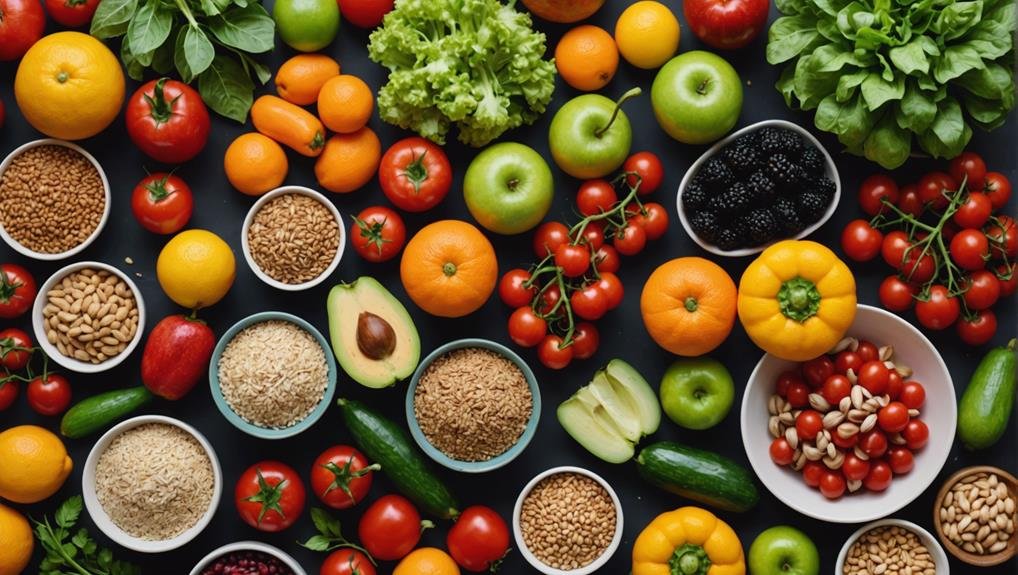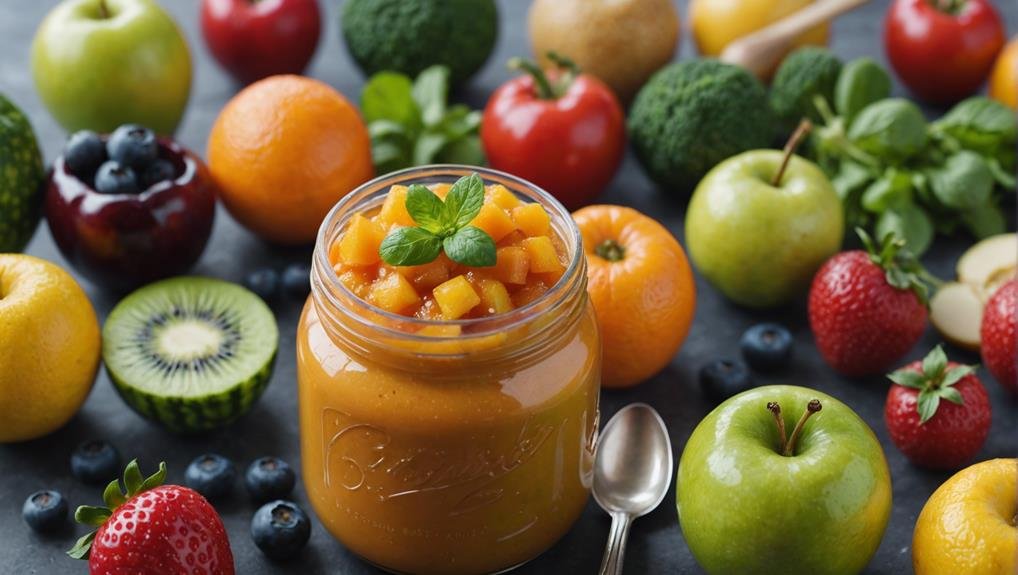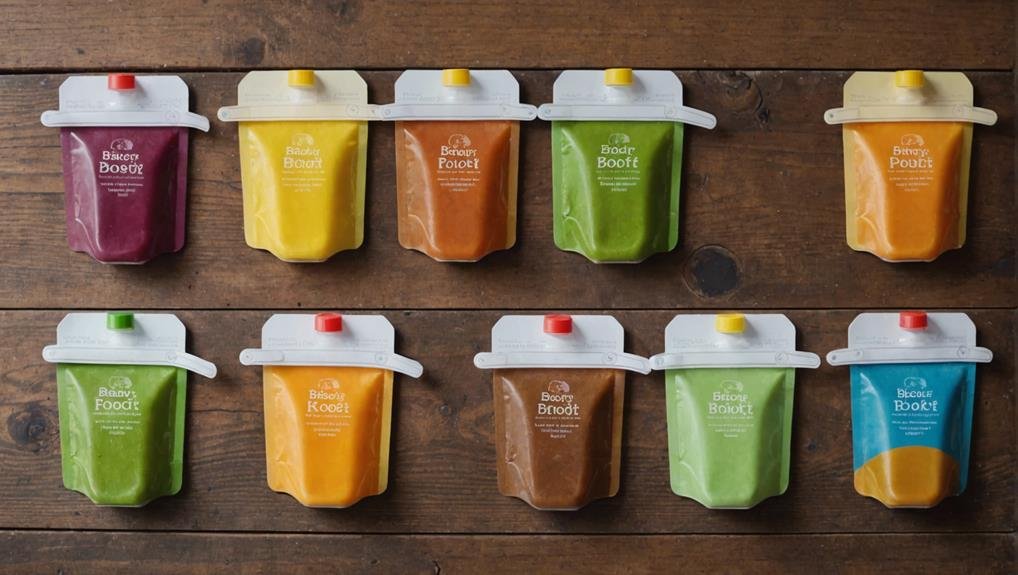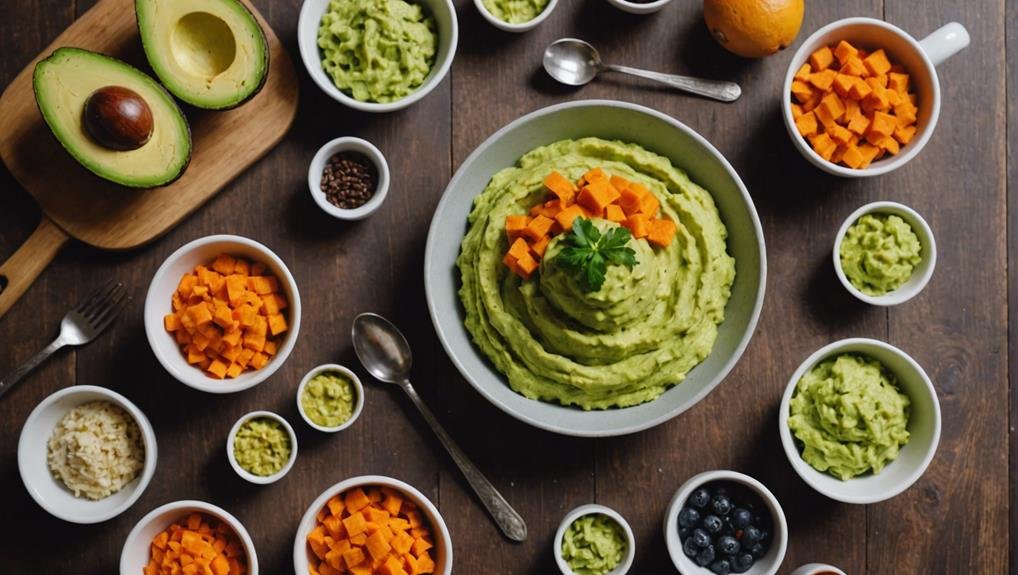"Cherishing Little Steps - A Haven for Baby and Family Journeys"
Baby Food
When it comes to nourishing your little one, the world of baby food offers a multitude of options to consider. From exploring the nutritional needs of babies to navigating the realm of homemade recipes and store-bought brands, the choices can seem overwhelming. But fear not, as understanding the benefits of organic baby food, the baby-led weaning method, and how to introduce allergens can steer you in the right direction. So, buckle up and get ready to embark on a journey through the diverse landscape of baby food options that will leave you well-equipped to make informed decisions for your child's nutritional well-being.
Nutritional Needs of Babies

Babies require a diet rich in essential nutrients to support their rapid growth and development. Nutrient-rich purees and finger foods play a crucial role in providing infants with the nourishment they need.
Breastfeeding offers numerous benefits, as breast milk contains a perfect blend of nutrients that aid in the baby's overall well-being. The antibodies present in breast milk help strengthen the baby's immune system, protecting them from infections and diseases.
If breastfeeding isn't an option, baby formula serves as a suitable alternative. It's specially formulated to mimic the nutritional composition of breast milk, ensuring that babies receive the necessary nutrients for their growth and development.
When transitioning to solid foods, nutrient-rich purees made from fruits and vegetables can be introduced to provide additional vitamins and minerals.
As babies grow older and become more independent, introducing finger foods can help them develop their fine motor skills and explore different textures. These foods should be soft and easy to chew to prevent choking hazards while still offering essential nutrients for their continued growth and development.
Homemade Baby Food Recipes
When preparing homemade baby food recipes, it's essential to ensure that the ingredients are fresh and free from any additives or preservatives.
Puree combinations are a popular choice for introducing solids to your baby. You can create delicious blends by pureeing fruits like apples, pears, and bananas with vegetables such as sweet potatoes, peas, and carrots. These combinations offer a variety of flavors and essential nutrients for your little one.
As your baby progresses through different baby food stages, experimenting with various textures is crucial. Starting with smoother purees and eventually moving to chunkier textures helps in developing your baby's chewing skills and introduces them to different consistencies.
Baby food pouches are convenient for on-the-go feeding and come in a variety of flavors and combinations to suit your baby's preferences.
Remember to introduce new foods one at a time to monitor for any allergies. Homemade baby food allows you to control what goes into your baby's meals, ensuring they receive nutritious and wholesome food as they explore different tastes and textures.
Benefits of Organic Baby Food

To maximize the nutritional value of your baby's meals, considering the benefits of organic baby food is a wise choice. Organic baby food offers numerous advantages that can positively impact your little one's health and well-being.
One key benefit is the use of sustainable packaging, which not only helps the environment but also ensures that harmful chemicals don't leach into the food. Additionally, organic baby food provides a wide range of flavor varieties, introducing your baby to diverse tastes that can help develop their palate from an early age.
Choosing organic baby food means you're opting for products that are free from synthetic pesticides, hormones, and genetically modified organisms. This reduces your baby's exposure to potentially harmful substances, promoting a healthier start to life.
Moreover, organic farming practices prioritize soil and water conservation, contributing to a more sustainable food system for future generations.
Incorporating organic baby food into your child's diet can be a flavorful and nutritious choice that supports both their well-being and the environment.
Baby-Led Weaning Method
Consider incorporating the Baby-Led Weaning Method into your child's feeding routine for a hands-on approach to introducing solid foods. This method involves letting your baby self-feed from the start, skipping purees and spoon-feeding.
Baby-Led Weaning has its pros and cons. Some benefits include promoting self-regulation of food intake, improving hand-eye coordination, and encouraging a diverse range of foods. On the other hand, potential downsides may include concerns about choking risk and ensuring proper nutrition intake.
When transitioning to Baby-Led Weaning, it's essential to remember a few tips. First, ensure your baby can sit up unassisted and has lost the tongue-thrust reflex. Offer appropriately sized and textured foods that are easy to grasp. Start with softer options like steamed vegetables or ripe fruits. Avoid foods that pose a choking hazard, such as whole grapes or nuts.
Most importantly, always supervise your baby during mealtimes and be prepared for a messy but rewarding journey as your little one explores new tastes and textures.
Popular Store-Bought Brands

Several well-known brands offer a variety of baby food options suitable for different stages of your child's feeding journey. When choosing store-bought baby food, consider factors such as taste preferences, packaging options, price comparison, and ingredient lists to ensure you're providing your little one with the best nutrition. Here is a comparison table of some popular store-bought baby food brands to help you make an informed decision:
| Brand | Taste Preferences | |
|---|---|---|
| Gerber | Fruity and Sweet Flavors | |
| Beech-Nut | Natural and Earthy Tastes | |
| Ella's Kitchen | Unique and Exotic Blends | |
| Packaging Options | Price Comparison | Ingredient Lists |
| Pouches | Affordable | Organic, Non-GMO, No Added Sugars |
| Glass Jars | Mid-Range | Allergen-Free, High-Quality Ingredients |
| Squeezy Packs | Premium | Locally Sourced, BPA-Free Packaging |
Introduction to Baby Cereals
When introducing baby cereals into your child's diet, it's essential to choose options that align with their nutritional needs and developmental stage.
Baby cereal options vary widely, including single-grain varieties like rice, oatmeal, or barley, as well as mixed-grain cereals that combine different grains for added nutrition. These cereals are fortified with essential vitamins and minerals to support your baby's growth and development.
Texture preferences play a crucial role in your baby's acceptance of cereals. Some babies prefer smoother textures, while others may enjoy slightly thicker consistencies. It's important to observe your child's reactions to different textures and adjust accordingly.
Starting with a smoother cereal and gradually increasing the thickness can help your baby transition smoothly to more solid foods.
Best First Foods for Babies

As you explore introducing solid foods to your baby, beginning with nutrient-rich options that are gentle on their developing digestive system is key. Baby food textures play a significant role in your little one's food journey. Starting with smooth purees can help your baby transition to solid foods easily. Opt for single-ingredient purees like sweet potatoes, peas, or bananas to introduce new flavors gradually. These purees provide essential nutrients while being gentle on your baby's stomach.
When considering baby food flavor combinations, think about mixing different fruits or vegetables to expand your baby's palate. Combinations like apple and pear or carrot and sweet potato can offer a variety of tastes while ensuring a balanced diet. As your baby grows accustomed to different flavors, you can gradually introduce more complex combinations.
Allergies and Baby Food
Understanding potential allergens in baby food is crucial for ensuring your child's safety and well-being as they embark on their solid food journey. Allergies management is a vital aspect of introducing baby food. When introducing new foods, it's important to follow allergies precautions to minimize the risk of allergic reactions.
Start by introducing one new food at a time and waiting a few days before trying another. This approach helps pinpoint any potential allergens if a reaction occurs.
Common allergens to be cautious of when introducing baby food include dairy, eggs, peanuts, tree nuts, soy, wheat, fish, and shellfish. These foods should be introduced individually and in small amounts to monitor your baby's reaction. If you have a family history of allergies, it's even more crucial to be vigilant.
Remember, allergies can develop over time, so continue to observe your child's responses to different foods.
Proper allergies management and precautions can help your baby navigate their food journey safely, ensuring a positive and healthy start to their relationship with solid foods.
How to Store Baby Food

Proper storage of baby food is essential for maintaining its freshness and nutritional quality. When it comes to storing homemade baby food, freezing is a great option. You can use ice cube trays to freeze individual portions, making it easy to thaw only what you need. Remember to label the containers with the date of preparation to ensure freshness. The shelf life of frozen baby food is typically around 1-3 months, so make sure to consume within that timeframe for the best quality.
Consider portion sizes when storing baby food. It's recommended to freeze small portions to avoid waste.
Additionally, when traveling with baby food, opt for insulated bags or coolers to keep the food fresh. If you're on the go, pre-portioned containers are convenient for feeding your little one while out and about.
Transitioning to Table Foods
When introducing table foods to your baby, it is crucial to consider their readiness and nutritional needs to ensure a smooth transition. Baby food textures and flavors play a significant role in this process. As your baby progresses from purees to solid foods, gradually introduce different textures such as mashed, minced, and soft finger foods. Experiment with various flavors to expand their palate and encourage healthy eating habits from an early age.
| Baby Food Textures | Baby Food Flavors | Baby Food Packaging |
|---|---|---|
| Mashed | Fruity | Pouches |
| Minced | Veggie | Jars |
| Soft Finger Foods | Protein | Trays |
When selecting table foods, prioritize safety by avoiding choking hazards like whole grapes, nuts, or popcorn. Always supervise mealtime and cut food into small, manageable pieces. Additionally, pay attention to baby food packaging to ensure it is sealed and stored correctly to maintain freshness and prevent contamination. By focusing on textures, flavors, safety, and packaging, you can navigate the transition to table foods smoothly and joyfully for your little one.
Frequently Asked Questions
Can I Mix Breast Milk/Formula With Store-Bought Baby Food?
Yes, you can mix breast milk or formula with store-bought baby food. Breast milk compatibility provides natural nutrition, while formula alternatives offer flexibility. Consult your pediatrician for personalized guidance on introducing these combinations to your baby's diet.
What Is the Ideal Texture for Baby Food?
When it comes to texture preferences, consider developmental stages. Homemade baby food offers control over texture, ensuring optimal nutrition. Store-bought options prioritize convenience but may lack the same nutritional value. Balance between convenience and nutrition is key.
Are There Specific Foods to Avoid During Baby-Led Weaning?
When starting baby-led weaning, remember to steer clear of choking hazards like whole nuts and hard candies. Also, be cautious with allergenic foods. Ensure nutritional balance by observing your baby's cues for hunger and fullness.
How Can I Ensure My Baby Is Getting Enough Iron From Food?
To ensure your baby gets enough iron from food, focus on iron-rich foods like meats, beans, and fortified cereals. Enhance iron absorption by combining these with vitamin C sources like fruits in baby recipes.
Is It Safe to Freeze Homemade Baby Food in Glass Containers?
Freezing homemade baby food in glass containers is safe, especially if they are BPA free. Did you know that glass can last over 1 million years in a landfill? Ensure to cool food before freezing for safety.
Conclusion
In conclusion, ensuring your baby receives the right nutrients is essential for their growth and development. Consider incorporating homemade purees or organic options into their diet, as well as exploring baby-led weaning for a hands-on approach to introducing solids.
Always be mindful of potential allergies and proper storage techniques. For example, a study found that babies introduced to a variety of flavors early on were more likely to accept a wider range of foods later in life.




